Naria beckii (Gaskoin, 1836)
Beck's cowry, 8-15mm
Naria beckii is one of
the smallest cowries found in the Marshalls. Over the last 30 or so years, its
abundance has varied much more noticeably than other species. Usually it is
rarely found in the living state, if at all. At certain other times, they can
be found with some regularity, as long as you know where to look for them. Specimens
typically live on the leeward and sometimes windward seaward reefs. Sometimes
during the day they hide under rocks and in piles of rubble from the upper edge
of the dropoff as shallow as 5m down the slope to as deep as 40m or more. Most
often they are found at night in ledges in surge channels and along the dropoff.
The mantle that covers the shell at night has very long papillae, and the animal’s
small size makes a living specimen look like little more than a fuzzy blob to
the naked eye. With the typically irregular surfaces of ledges, the mantle-covered
shell becomes very difficult to recognize in its typical surroundings. Although
living specimens are quite difficult to find, dead shells are relatively frequently
seen in sandy bottom surge channels, where they have fallen after the death
of the animal. Looking at the relative abundances of dead specimens from one
year to the next gives an idea of how the population of living specimens fluctuates
over time. Dead specimens have also been observed on shipwrecks at the bottom
of Kwajalein’s lagoon. It ranges through most of the Indo-Pacific with
the apparent exception of southeastern Polynesia, Western Australia, and the
northern Indian Ocean. This species is named after 19th century Dutch naturalist
H. Beck.
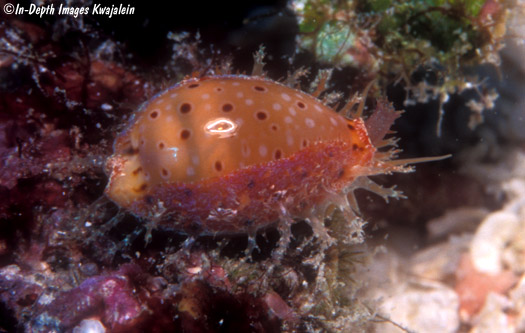
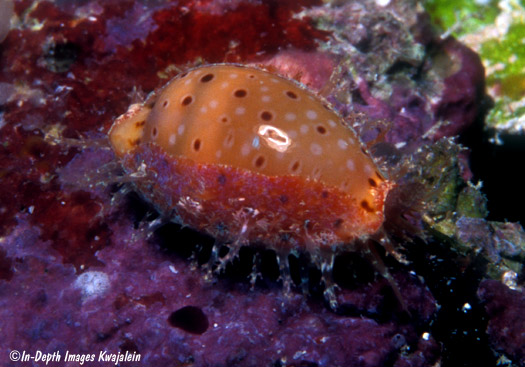
The dark spots on the shell are visible through the translucent reddish-orange
mantle.
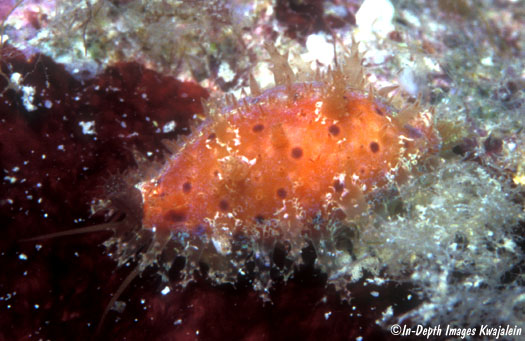
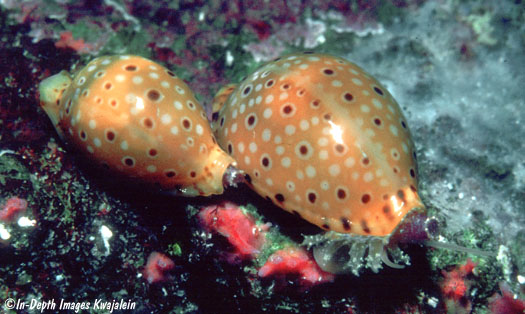
The one below as in a seaward reef
channel ledge at night.
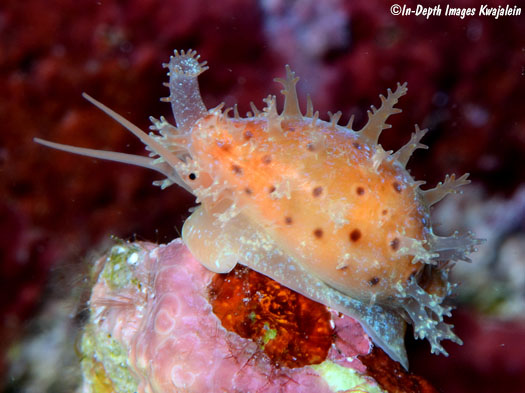
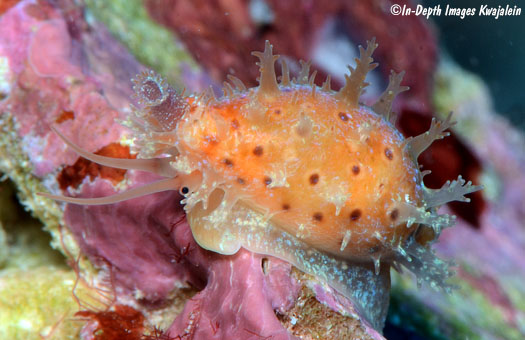
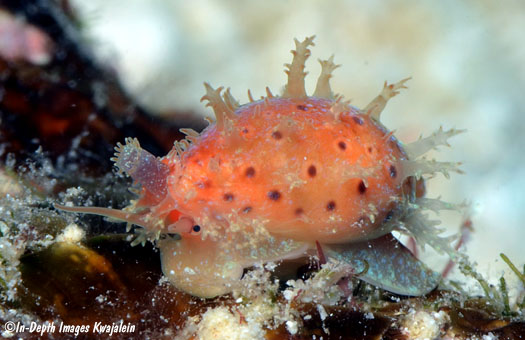
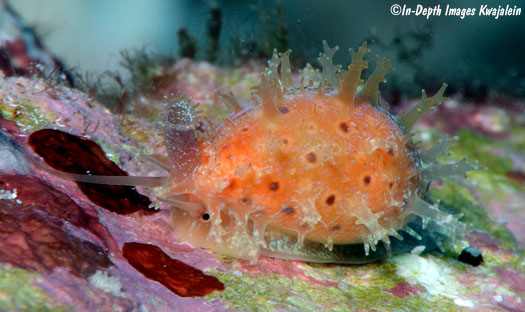
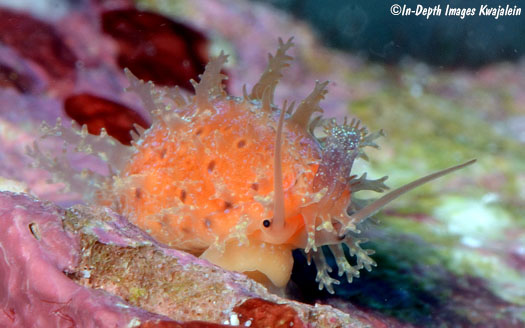
11.2mm, June 1982
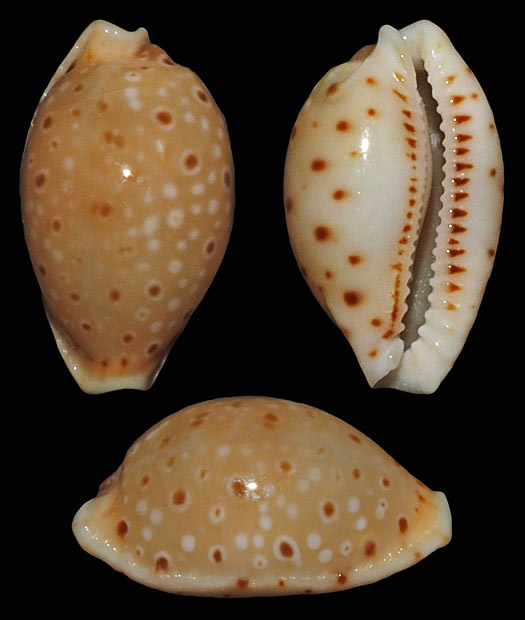
9.8mm, 9 April 2016

Created
1 April 2008
Updated 3 April 2024
Back to
cowries
Kwajalein Underwater Home











